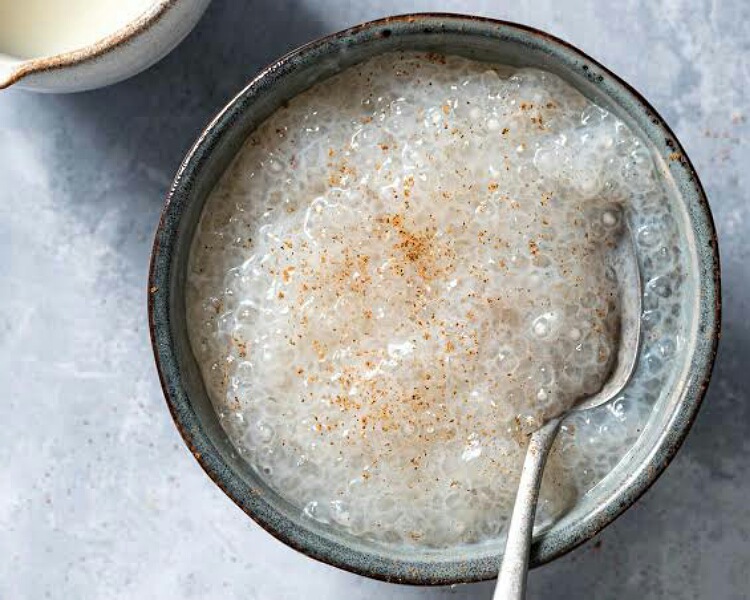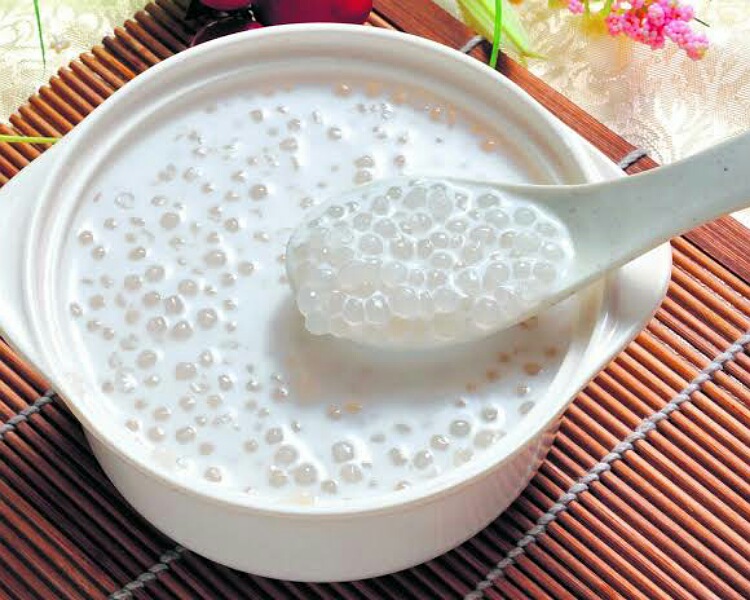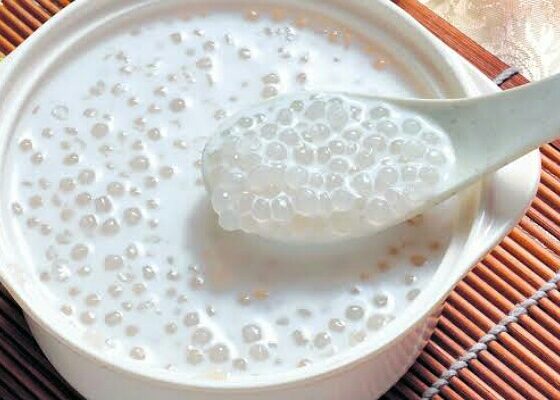Sago is an extract from the tropical palms such as Metroxylon sagu. It is carbs mainly and has very less of other nutrients. Is it healthy to consume it?
Sago
Certain tropical palms yield this extract from the central part of their stems. This is solidified to make sago that we get in the markets. It is a form of resistant starch and a complex carbohydrate. It has innumerable molecules of glucose and when digested produces glucose which is a source of instant energy for the body.

The palm tree, Metroxylon sagu, usually yields this food. This palm is native to several areas of the world such as Malaysia, Indonesia, the Philippines, and also Papua New Guinea. It can grow in a wide variety of soil conditions. Moreover, it grows quickly. It is a staple in the daily diets of people from South East Asia.
One can buy it in pearl forms or as a flour. It is gluten free and vegan friendly. It can replace wheat flour and flour of other grains in baked products. People on restricted diet can also have them.
Nutrition-related facts
This food is not very nutritious. It is mainly starch with very less of proteins, fats, minerals, vitamins or dietary fiber. 100 grams of it has 332 calories with less than a gram of protein. Fat content is also less than 1 gram. Dietary fiber is below one gram. Carbs content is 83 grams while zinc is in fair amounts. Other than zinc, it has very less of other nutrients, vitamins, and minerals in it. Hence, it is nutritionally inferior to other grains.

But it does have some antioxidants in it. Hence, it can be consumed intermittently and occasionally. And it is good for people with celiac disease, inflammatory bowel disease, gluten intolerance and gluten sensitivity. It is good for people on grain free diets such as the Paleo diet.
Potential health benefits
Laboratory data has shown that sago has phytochemicals such as polyphenols including tannins and flavonoids. These function as antioxidants in the body. They bind to the free radicals of the body that can damage the body cells. Thus, they avert the likelihood of chronic diseases of heart, blood vessels, and other vital organs. Cancer risk decreases and inflammation also comes down in the body. This also boosts immune function.
Animal study revealed that mice fed a high sago diet has lesser incidence of atherosclerosis compared to those on low sago diet. But human studies on this aspect is lacking.

This food has 7.5% resistant starch. This remains undigested and reaches the colon. It is a prebiotic and can be a feed for the healthy bacteria of the gut. Thus it improves gut health and reduces body inflammation.
The healthy gut flora break the resistant starch and produce short chain fatty acids. These are beneficial for reducing appetite, weight management, lowering blood sugar, and improving digestion. Moreover, these fatty acids reduce insulin resistance and can be a boon for patients of diabetes.
Also, read: What is a Bubble tea? Is it carcinogenic?
It lowers blood cholesterol and protects the heart. This is due to sago’s high amylose content. Studies have shown it’s benefit in enhancing athletic performance. It improves endurance too. The body recovery is better with sago drinks or its porridge.
